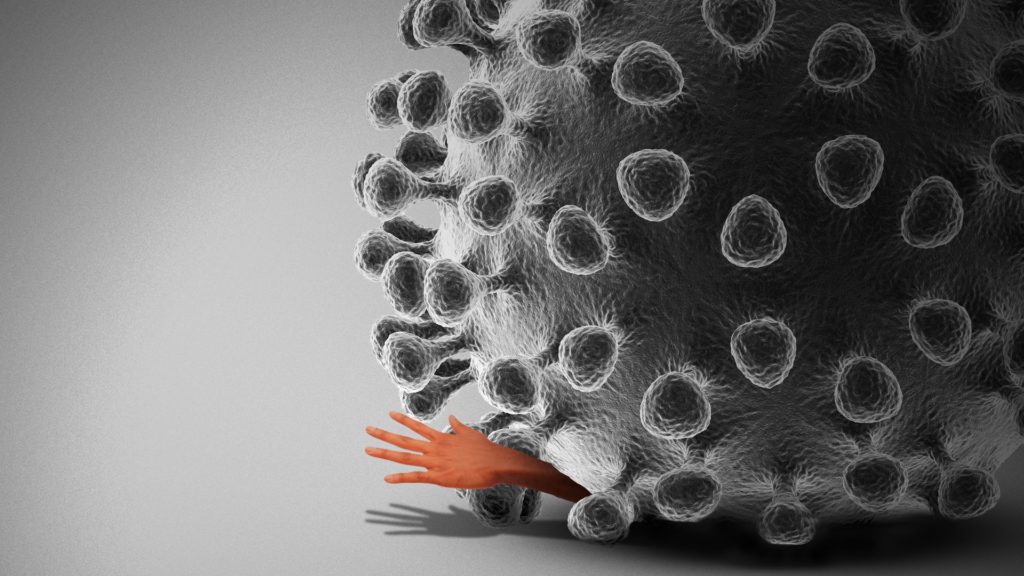The lineages’ rise seems to stem from their ability to infect people who were immune to earlier forms of Omicron and other variants.

Most countries worldwide now have few if any COVID-19 restrictions in place
7 July 2022 (Athens, Greece) – Like a Hollywood franchise that churns out sequel after mind-numbing sequel, Omicron is back.
Mere weeks after the variant’s BA.2 lineage caused surges globally, two more Omicron spin-offs are on the rise worldwide. First spotted by scientists in South Africa in April and linked to a subsequent rise in cases there, BA.4 and BA.5 are the newest members of Omicron’s growing family of coronavirus subvariants. They have been detected in dozens of countries worldwide.
Yesterday on Linkedin I posted a Guardian article that covered bits of this, some of it inaccurately. For context I quoted some R0 figures from the article (R0 tells you the average number of people who will contract the virus from one person with that virus):
Wuhan strain 👉🏼 R0 of 3.3
Delta strain 👉🏼R0 of 5.1
Omicron BA.1 👉🏼R0 of 9.5
BA.2 👉🏼 R0 of approx 13.3
BA.4/5 👉🏼R0 of 18.6
We still don’t know for sure what it is for BA.2.75. And for more context, the common flu has a R0 of 1.4
The game has changed. The problem with that kind of R0 is that it may hit with overwhelming speed, overwhelming everything.
But I saw some issues in the article and so I ran it by my team of epidemiologists. We have been here in Athens at the Department of Hygiene, Epidemiology and Medical Statistics at Kapodistrian University, Greece’s leading medical school, remotely following a series of presentations on the latest COVID developments presented by the Johns Hopkins Coronavirus Resource Center – the world’s leading institution on coronavirus research.
As I noted at the beginning of my series on COVID (for the whole series click on “COVID-19” in the menu bar above), ambiguity, uncertainty and the fog-of-pandemic – these would be the dominant themes of our time. As it developed, there would be no unifying public sphere with sufficient authority to settle any of it for people who are not of a particular persuasion. This was the immediate and obvious result from a society poisoned by social media.
As for me, I was venturing onto ground where I had no guarantee of safety or of academic legitimacy (I have a second, minor university degree in physics, of all things, but have been an avid reader of all-things-science my entire life) so it was not my intention to pass myself off as a scholar, nor as someone of dazzling erudition. It was enough for me to act as a messenger for those who did have the knowledge, and offer my own reflections on that knowledge. As I wrote at the beginning of the series, there was a tsunami of material to read. With a high level of complexity. The unprecedented uncertainty amid the coronavirus pandemic (especially the data) had decimated our carefully laid plans and unsettled our minds at equal pace. This coronavirus, with its health, social, scientific and economic impacts, had made the content production engine of this world go into overdrive, leaving most of us struggling within an infodemic.
But plod on I did, receiving weekly updates from the Johns Hopkins Coronavirus Resource Center plus about 25 other sources, putting my 6 person media team on the case.
The key thing in the Guardian article which I saw and an epidemiologist confirmed was some carelessness with the numbers. You cannot mix immune evasion with increased transmissibility. If the old variant is already established and is slowly disappearing, the transmission advantage(≠R0) from new variant results from different immunity.
And that is because anything above BA.2 requires additional genome analysis due to its “stealth” categorization so the R-Naught may or may not be higher than whats projected. But as he said the trend “still sucks”.
It is called a “stealth” categorization because a PCR test only registers as plain coronavirus but doesn’t know what subline. It is missing the mutation. Identifying BA.2 infections usually requires more extensive genetic sequencing. Because of the missing mutation, you don’t know what you’re looking at, whether it’s BA.1 or BA.2, or a different variant altogether.
Another epidemiologist said the article conflates Ro and Rt:
“When we say that BA4/5 is 1.4 times more transmissible than BA2 it doesn’t mean Ro is 1.4 times greater, just Rt. This is because it can reinfect people. Rt~=Ro*pS where pS is proportion susceptible. Immune evasion raises pS. But the trend line is still worrisome”.
So the key COVID-19 indicator becomes Rt, a measure of how fast the disease is spreading. A value higher than one means infections are increasing; lower than one means they’re decreasing.

The Johns Hopkins briefings on what the rise of BA.4 and BA.5 means for the pandemic have concluded. Let me try to summarise a tsunami of information in the simplest terms possible.
The BA.4 and BA.5 subvariants are spiking globally because they can spread faster than other circulating variants – mostly BA.2, which caused a surge in cases at the beginning of the year. But so far, the latest Omicron variants seem to be causing fewer deaths and hospitalizations than their older cousins – a sign that growing population immunity is tempering the immediate consequences of COVID-19 surges.
What are BA.4 and BA.5?
The two variants are more similar to BA.2 than to the BA.1 strain that kicked off most countries’ Omicron waves late last year. But BA.4 and BA.5 carry their own unique mutations, including changes called L452R and F486V in the viral spike protein that might tweak its ability to latch onto host cells and skirt some immune responses.
Some of the preprints found that BA.4 and BA.5 share an origin with earlier Omicron strains. But an unpublished analysis led by evolutionary geneticists Bette Korber and William Fischer at Los Alamos National Laboratory in New Mexico suggests that the variants are probably offshoots of BA.2 instead.
A preprint is a manuscript prepared for publication as a journal article that gets shared prior to peer review by a journal. Publishing preprints enables the immediate sharing of research results so other researchers doesn’t have to wait so long to find out about research that’s already been done, and it allows for immediate feedback.
Korber and Fischer also found that many genome sequences that are classified as BA.2 in public databases are actually BA.4 or BA.5. As a result, researchers could be underestimating the variants’ ongoing rise, as well as the diversity of mutations carried by them. As they noted: “It is important in this particular moment in the pandemic to get these calls right”.
Why are the variants on the rise globally?
Variants’ transmission advantages can result from biological changes that speed infection, for instance, allowing the virus to infect more people, more quickly.
But the rise of BA.4 and BA.5 seems to stem, instead, from their capacity to infect people who were immune to earlier forms of Omicron and other variants. With most of the world outside Asia doing little to control SARS-CoV-2, the rise – and inevitable fall – of BA.4 and BA.5 will be driven almost entirely by population immunity, with cases increasing when protection lulls and falling only when enough people have been infected.
On the basis of the rise of BA.5 in Switzerland – where BA.4 prevalence is low – epidemiologists estimate that about 15% of people there will get infected. But countries are now likely to have distinct immune profiles because their histories of COVID-19 waves and vaccination rates differ. As a result, the sizes of BA.4 and BA.5 waves will vary from place to place. It might be 5% in some countries and 30% in others. It all depends on their immunity profile.
Which leads many epidemiologists to estimate a summer of unrestricted travel to and across counties and zones of varying COVID intensity will unleash another serious wave in the fall in many countries.
What impact will BA.4 and BA.5 have on society?
This, too, is likely to vary by country. Despite high case numbers, South Africa experienced only a small rise in hospitalizations and deaths during its BA.4 and BA.5 wave, say epidemiologists at the country’s National Institute for Communicable Diseases in Johannesburg.
In a study that will soon be posted to the medRxiv preprint server, researchers found found that South Africa’s BA.4 and BA.5 wave led to similar rate of hospitalization but slightly lower death rate when compared with the country’s earlier Omicron wave. Both Omicron surges proved much milder, in terms of hospitalizations and deaths, than the country’s ferocious Delta wave.
Outside South Africa, other countries are seeing more significant impacts from BA.4 and BA.5. In Portugal – where COVID-19 vaccination and boosting rates are very high – the levels of death and hospitalization associated with the latest wave are similar to those in the first Omicron wave (although still nothing like the impact caused by earlier variants). The UK seems to be tracking the Portugal pattern.
One explanation for the difference could be Portugal’s demographics. The more elderly people you have, the more severe disease. The nature of a country’s immunity can also explain varying outcomes. About half of adult South Africans have been vaccinated, and just 5% have taken up a booster. But this, combined with sky-high infection rates from earlier COVID-19 waves, has erected a wall of “hybrid immunity” that offers strong protection against severe disease, particularly in older people, who are the most likely to have been vaccinated.
How well do vaccines work against the variants?
Lab studies consistently suggest that antibodies triggered by vaccination are less effective at blocking BA.4 and BA.5 than they are at blocking earlier Omicron strains, including BA.1 and BA.2. This has led to even vaccinated and boosted people vulnerable to multiple Omicron infections, and I am sure most readers have friends and family (if not themselves) in that group who have fallen to Omicron. Even people with hybrid immunity, stemming from vaccination and previous infection with Omicron BA.1, produce antibodies that struggle to incapacitate BA.4 and BA.5. Research teams have attributed that to the variants’ L452R and F486V spike mutations.
One explanation for this is the observation that BA.1 infection after vaccination seems to trigger infection-blocking “neutralizing” antibodies that recognize the ancestral strain of SARS-CoV-2 (the one that vaccines are based on) better than they recognize Omicron variants. Infection with BA.1 does induce a neutralizing antibody response, but it appears to be a little bit narrower than one would expect, leaving people susceptible to immune-escaping variants such BA.4 and BA.5.
What will come next?

I really do not want to punt on this one but I must say “It’s anybody’s guess”. The parade of Omicron subvariants could continue, with new variants picking further holes in existing immunity. Nobody can say BA.4/5 is the final variant. It is highly probable that additional Omicron variants will emerge. Researchers have identified several spots on the spike protein that are currently recognized by the antibodies that are triggered by vaccination and previous infection, but that could mutate in future Omicron strains.
Another possibility is the emergence of a variant from a branch of the SARS-CoV-2 family tree different from the one that bore Omicron. Repeat Omicron infections could build broad immunity against successive lineages, creating an opening for a totally different SARS-CoV-2 variant that is unfamiliar to people’s immune responses. In one preprint I read the researchers concluded “The bar is getting higher and higher for a virus to take over”.
Increasingly, scientists think that variants including Omicron and Alpha probably originated from months-long chronic SARS-CoV-2 infections, in which sets of immune-evading and transmissibility-boosting mutations can build up. But the longer Omicron and its offshoots continue to dominate, the less likely it is that a totally new variant will emerge from a chronic infection.
To succeed, future variants will have to evade immunity. But they could come with other worrying properties. One team found that BA.4 and BA.5 were deadlier in hamsters than was BA.2, and better able to infect cultured lung cells. Several epidemiology studies suggest that successive COVID-19 waves are getting milder. But this trend should not be taken for granted. Viruses don’t necessarily evolve to become less deadly. And every epidemiologist I spoke with said “we need to stop these pieces that compare COVID to the common flu. This is a far more serious viral infection”.
It’s also unclear when the next variant will appear. BA.4 and BA.5 started emerging in South Africa only a few months after BA.1 and BA.2, a pattern now being repeated in places including the United Kingdom and United States, but also Belgium, France, Germany and Italy. But as global immunity from repeated vaccination and infection builds, many epidemiologists expect the frequency of SARS-CoV-2 waves to slow down – but over several years, not months.
Which is why many epidemiologists think one possible future for SARS-CoV-2 is that it will become like other seasonal coronaviruses, the levels of which ebb and flow with the seasons, usually peaking in winter and typically reinfecting people every three years or so.
BUT … this really is a different coronavirus and the research is still in its first stages. The big question is whether symptoms will become milder and milder and whether issues with long COVID will slowly disappear. If it stays like it is now, then it will remain a serious public-health problem.
It is why every participant in the Johns Hopkins event said the wearing of masks (and the appropriate use, storage and cleaning or disposal of masks are essential to make them as effective as possible) should be used as part of a comprehensive strategy of measures to suppress transmission and save lives. The use of a mask alone is not sufficient to provide an adequate level of protection against COVID-19. To stay safe they suggest additional, simple precautions which most people have dropped, such as physical distancing, keeping rooms well ventilated, avoiding crowds, cleaning your hands, and coughing into a bent elbow or tissue.
And if you have an invitation or option to get the 2nd booster (4th vaccine), do it.
On a personal note, I have been struck twice. I had Covid at the end of August 2020, and again in March of this year – after being triple vaxed. Each time I spent several weeks in bed with an intermittent fever and a strong feeling that my body was dealing with something unfamiliar. But I was lucky: it was only the “moderate” versions of Covid as my doctor told me. However, it developed into long Covid which has not abated with the most pronounced symptom being extreme fatigue. My nights are restless and I must doze for 1-2 hours twice during the day.
No, it has not been much fun. I have had the semi-delirious sense that my body knew it was dealing with a new illness. I feel OK and then not OK, in waves. In my diary I noted:
It was like being in a room in a not very good hotel where somebody keeps trying to open your door, rattles the lock for a while, then gives up and goes away, only to come back and try again a few hours later. It felt as if Covid was repeatedly returning to try the lock. It was a sensation I’ve never had with any other illness: the feeling that Covid had intentions, and that they were not benign.
On a global level, Covid hasn’t stopped coming back to try the door.